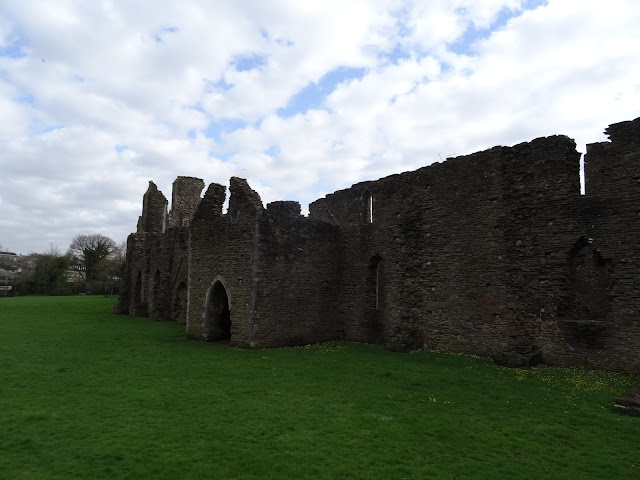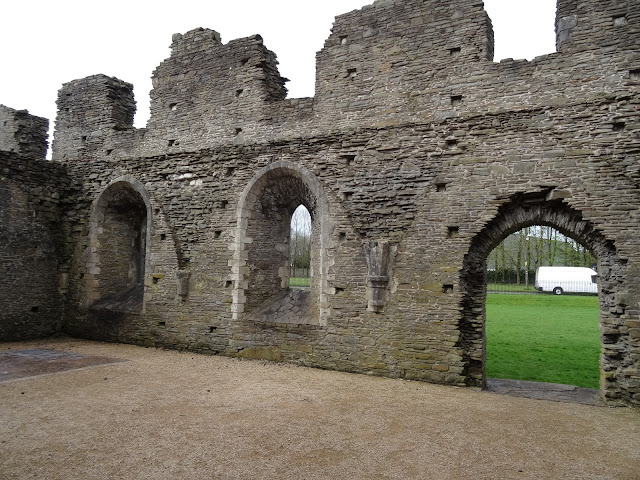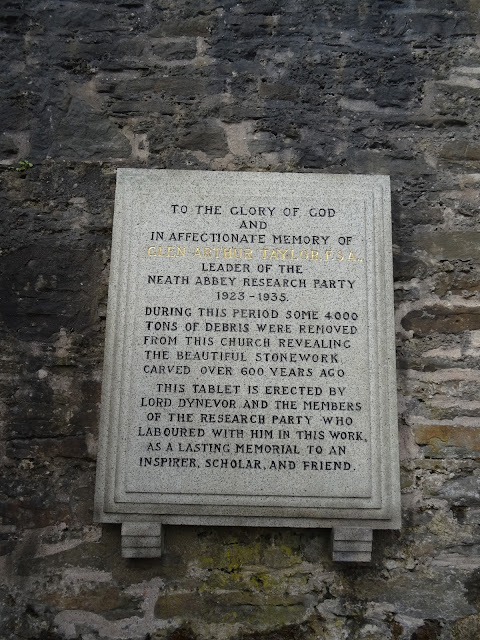Neath first. Hidden away in an industrial park - an area that has been industrialized for nearly three centuries now. An unexpected place, then. John Leland said that it was the fairest abbey in all Wales. (Cistercian, founded 1130 by Sir Richard de Granville) High praise indeed - but better than Tintern? Who knows now, because the intervening years have been cruel. Though possibly not a completely false comparison: the plans of both abbey churches are remarkably similar, almost identical, though Neath is a touch smaller and the nave is one bay longer than Tintern, which is the slightly older structure. What does remain of the Abbey church however does suggest something fine. And looking online there are a number of engravings of the abbey remains that show some good architecture. The 16th century Welsh writer Lewis Morganwg wrote of the abbey in heavenly terms. As often was the case at the Dissolution part of the abbey was converted into a country house, in this case by the Herberts. That house forms now the most easily understandable, and attractive, part of the ruins. (Unfortunately closed for repairs!) By the 1720/1730s however house and abbey had been turned into a copper smelting works. Then it was iron smelting. The abbey though continued to draw artists and antiquaries. It was depicted in the Buck brother's monumental print series 'A Collection of Engravings of Castles, Abbeys and Towns in England and Wales' looking very pastoral, the abbey church looking very much as it does today which sort wrecks my theory that the fine stonework (limestone) was robbed out during the industrial revolution for the production of lime. Whatever happened the loss of the detailing has left the abbey remains looking a bit amorphous, sometimes forbidding. When Gilpin visited perhaps more remained than now; he writes obscurely of a 'double tower', but one suspects his visit was fleeting and not too close. What he actually saw, and thought were towers, are the two pinnacles of stonework left from the west front of the abbey.
The abbey church again was depicted, from a distance, in that rare and obscure 1835 guide book 'A Guide to the Beauties of Glyn Neath' by William Young. In the 19th century John Borrow describes the surroundings of the abbey as hell on earth, but the abbey, partly abandoned now, was at a one remove from the desolation. By the beginning of twentieth century the remains were buried in up to 17ft of industrial waste, and it wasn't until the 1920s that the ruins were cleared of up to 4,000 tons of rubbish by the Neath Abbey Research Party under the aegis of Glen Arthur Taylor.
In 1942 John Piper, accompanied by the poet Geoffrey Grigson travelled to Glyn Neath in search of waterfalls (there are quite a number at the top of the valley) guided by Young's book. Perhaps they came here, but after a quick internet trawl I haven't found anything to suggest they did. The site is now under the care of Cadw. A slightly strange, haunting place in all.














No comments:
Post a Comment